How to Organize Closet Efficiently for Maximum Space and Accessibility
Organizing a closet doesn’t have to be overwhelming. The key is to sort your items by category, use space-saving tools like slim hangers or double rods, and create a designated spot for every item. This makes it easier to find what you need and keeps the closet neat over time.
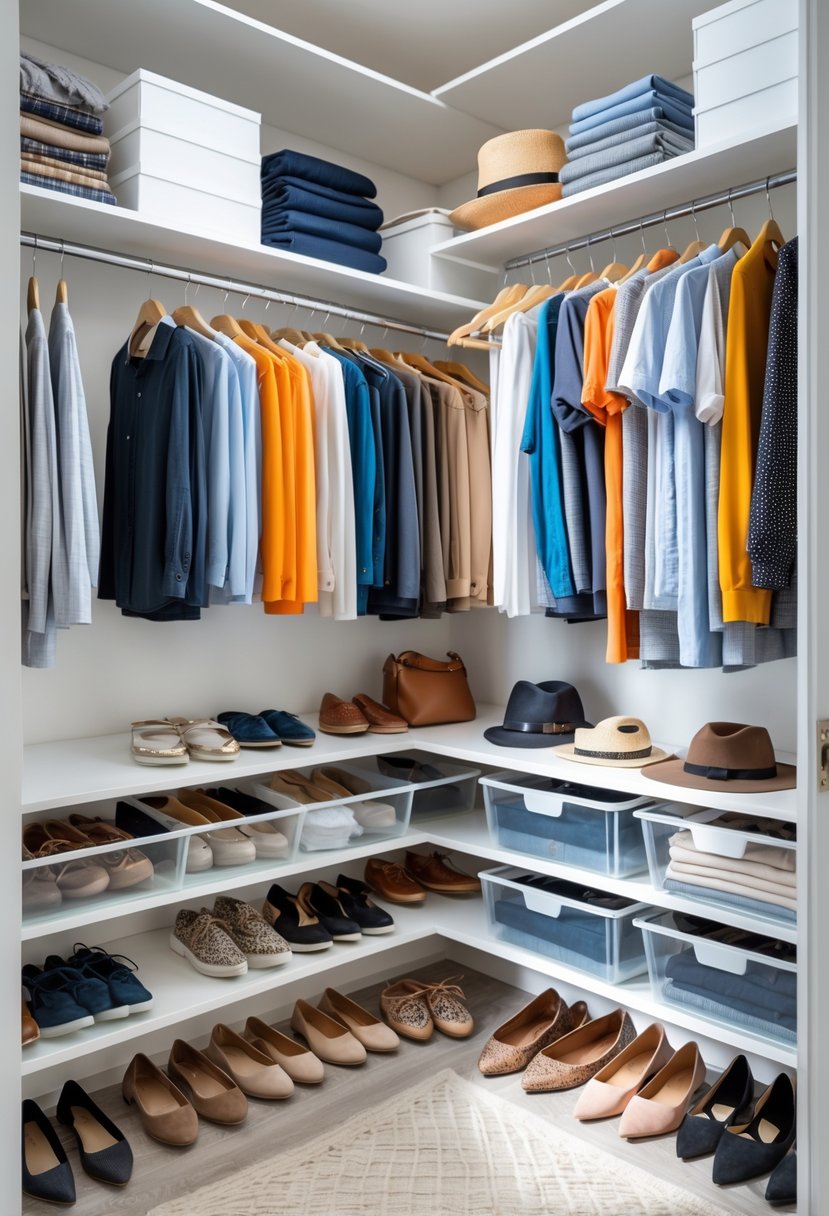
I’ve found that breaking the task into simple steps helps maintain focus and avoid clutter. Whether your closet is small or large, putting things in order creates a more functional space that supports your daily routine.
By using clear sorting methods and smart storage solutions, you can turn your closet into a space that feels calm and organized instead of chaotic. This approach saves time and reduces stress when you get dressed each day.
Decluttering Your Closet
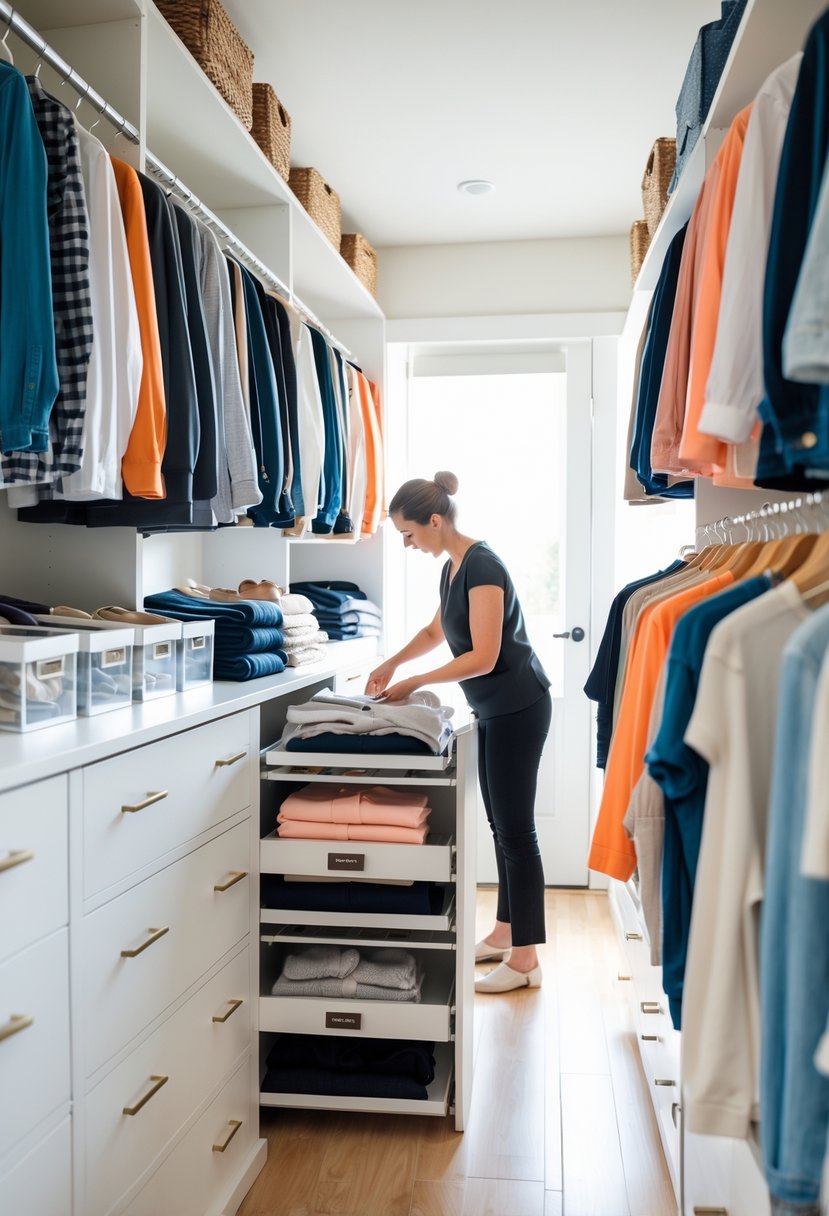
I start by getting everything out so I can see what I have. It’s important to sort items into groups, decide what’s truly useful, and prepare the rest to leave my closet. This process keeps my space clear and makes organizing easier later.
Sorting Clothing and Accessories
I take all my clothes, shoes, and accessories out and divide them into categories. I separate tops, bottoms, outerwear, shoes, and accessories like belts or hats. This helps me spot duplicates and items I rarely wear.
I also look for anything damaged or stained. Those go in a separate pile for repair or removal. Grouping by type and condition makes it easier to judge what I want to keep or let go.
Deciding What to Keep or Donate
When choosing what to keep, I ask myself if I’ve worn the item in the last year. If not, it usually doesn’t belong in my closet. I also think about whether it fits well and suits my current style or lifestyle.
Items in good condition but no longer needed go straight to donation. I keep only what fits, feels comfortable, and matches my daily life. This way, my closet holds things I truly use and enjoy.
Preparing Items for Removal
Once I pick items to remove, I sort them based on their next step. Clothes that can be donated go into clean bags or boxes. I label them clearly for easy drop-off.
For items that need repair, I separate them and make a quick list of fixes. Anything worn out or unusable is set aside to recycle or discard responsibly. This organized approach stops clutter from creeping back in.
Planning an Efficient Closet Layout
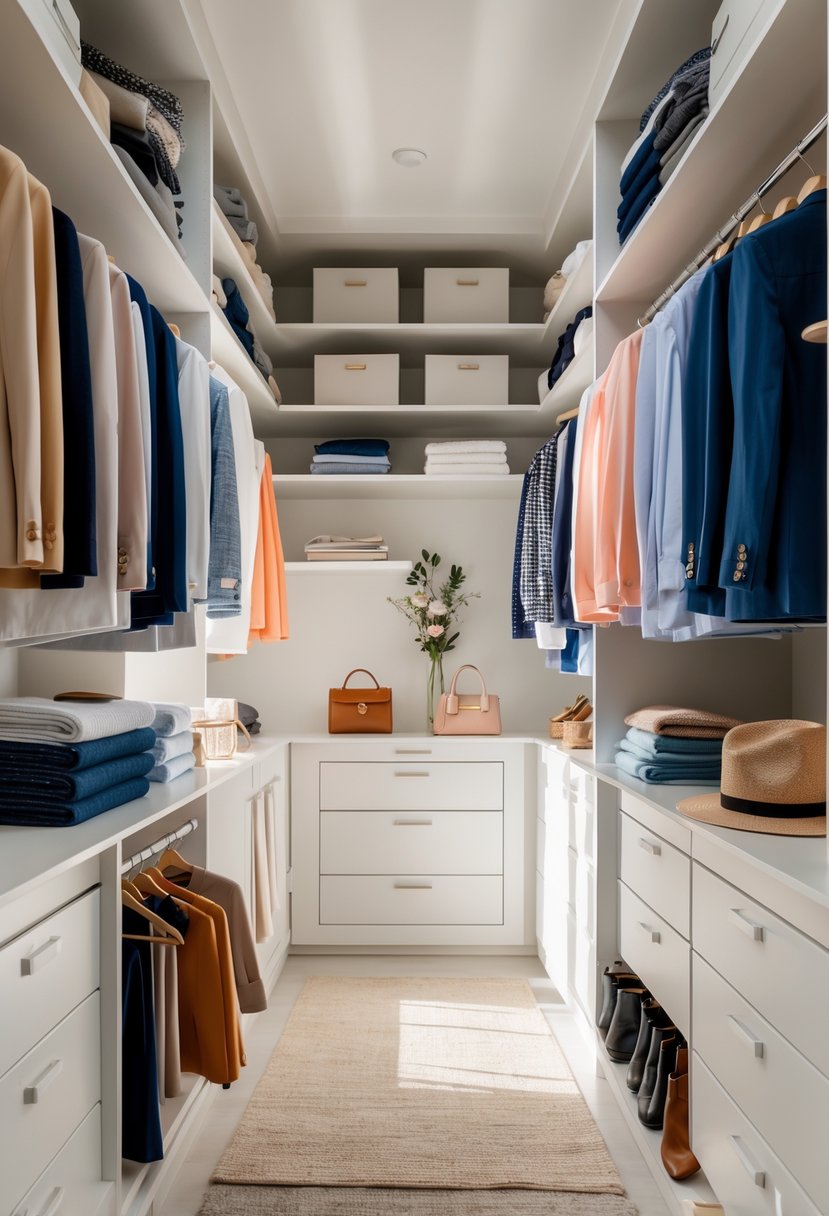
To create a closet that works well every day, I focus on organizing storage smartly, grouping items by use, and picking the right storage tools. This makes it easier to find what I need and keeps the space neat and functional.
Maximizing Storage Space
I start by using every bit of space wisely. Thin hangers help reduce clutter and fit more clothes on the rod. Adding a double hanging rod doubles the hanging area, perfect for shirts and pants.
Shelf space matters too. I use adjustable shelves so I can change heights based on what I store, like shoes or folded sweaters. Vertical storage, like hooks or tall bins, lets me use corners or door backs efficiently.
Keeping the floor clear is important. I store items in boxes or baskets that slide under lower shelves. This not only keeps things tidy but also makes cleaning easier.
Creating Designated Zones
I divide my closet into clear zones based on how I use my clothes. For example, I keep everyday clothes in one section, workwear in another, and formal outfits in a separate spot.
This zoning means I don’t waste time searching. Shoes get their own area, usually at the bottom, while accessories like belts or scarves live near the hanging clothes.
Designated zones help me plan for different seasons too. Off-season clothes go into less accessible areas or storage bins to free up space for current items.
Choosing Storage Solutions
Choosing the right storage pieces depends on what I own and how I use my closet. Drawers work great for small items like socks and underwear. Clear bins make it easy to see what’s inside without opening them.
I prefer open shelves for things I use often; it keeps everything visible. Hooks and rods are excellent for hanging bags, hats, or jewelry, adding more usable space.
A good mix of fixed and adjustable systems helps me stay flexible. If my needs change, I can move shelves or add new organizers without a full redo.
Organizing by Category and Season
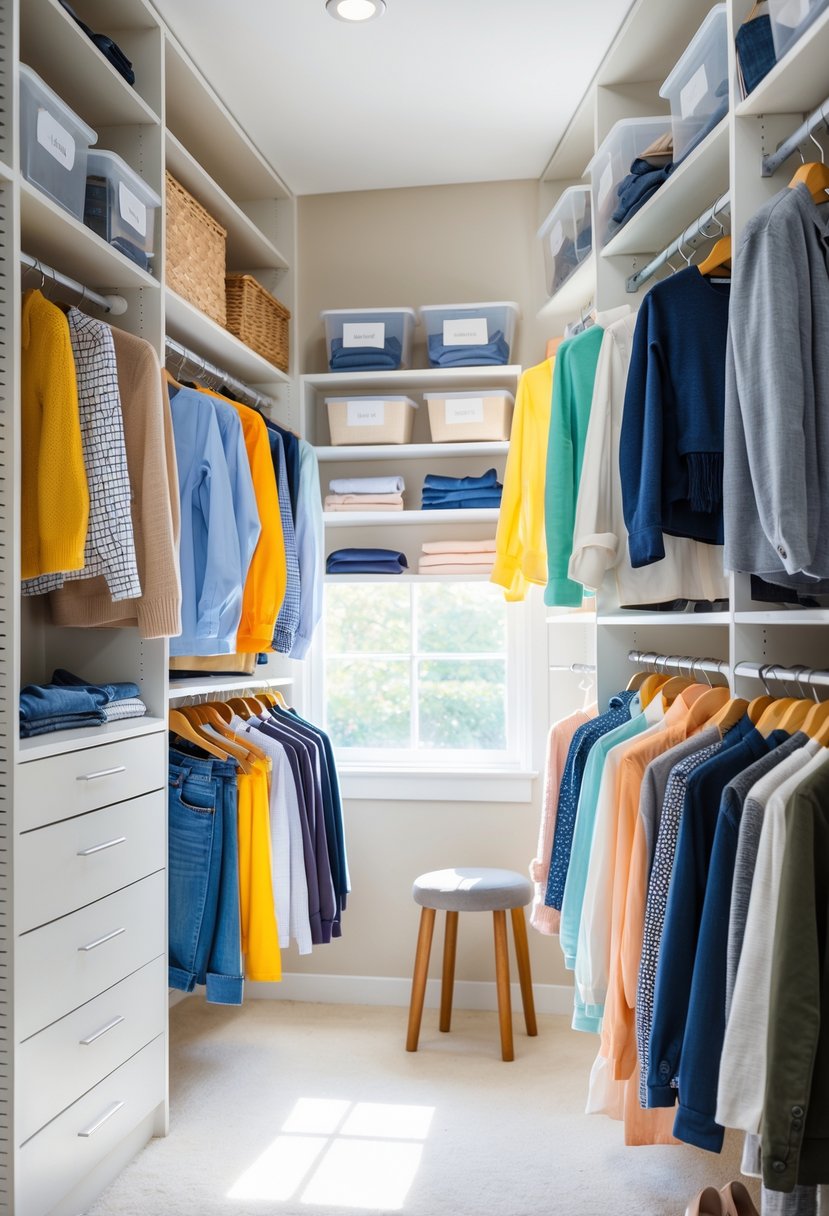
I find it easiest to keep my closet tidy when I sort clothes both by type and by season. This way, I know exactly where everything is. Keeping similar items together and rotating clothes based on the weather saves space and speeds up choosing outfits.
Arranging Clothes by Type
First, I group clothes by type, such as shirts, pants, dresses, and jackets. I hang items that wrinkle easily to keep them neat. Folding sweaters and t-shirts works better on shelves or in drawers since hanging can stretch them out.
I also keep accessories like belts and scarves together so they don’t get lost. Shoes go in their own zone, either on racks or in clear boxes to spot them quickly.
Using color coding helps me find items faster. For example, I arrange shirts from light to dark tones. This small step makes picking outfits simpler every day.
Rotating Seasonal Items
I separate out-of-season clothes to free up space for the current season. For example, in summer, my heavy coats go into bins stored on high shelves or under my bed. I leave some layering pieces handy for chilly mornings or unexpected weather.
Keeping a small “transition section” in the closet is helpful for days when the weather changes. Here, I keep light jackets or long sleeves I might need.
Every few months, I rotate seasonal items. This routine keeps my closet from feeling cluttered and makes sure I’m always ready for the weather.
Utilizing Shelves and Drawers
Shelves and drawers hold folded clothes and smaller items like underwear and socks. I use drawer dividers to keep everything separated and easy to find.
Clear bins or labeled baskets on shelves help me store accessories and keep them visible. This reduces the time spent searching for things.
For shoes, I prefer transparent shoe boxes or tiered racks. This protects them from dust and helps me spot pairs quickly.
Organizing shelves and drawers well means I can maximize every inch of space and avoid messy piles.
Maintaining Closet Organization
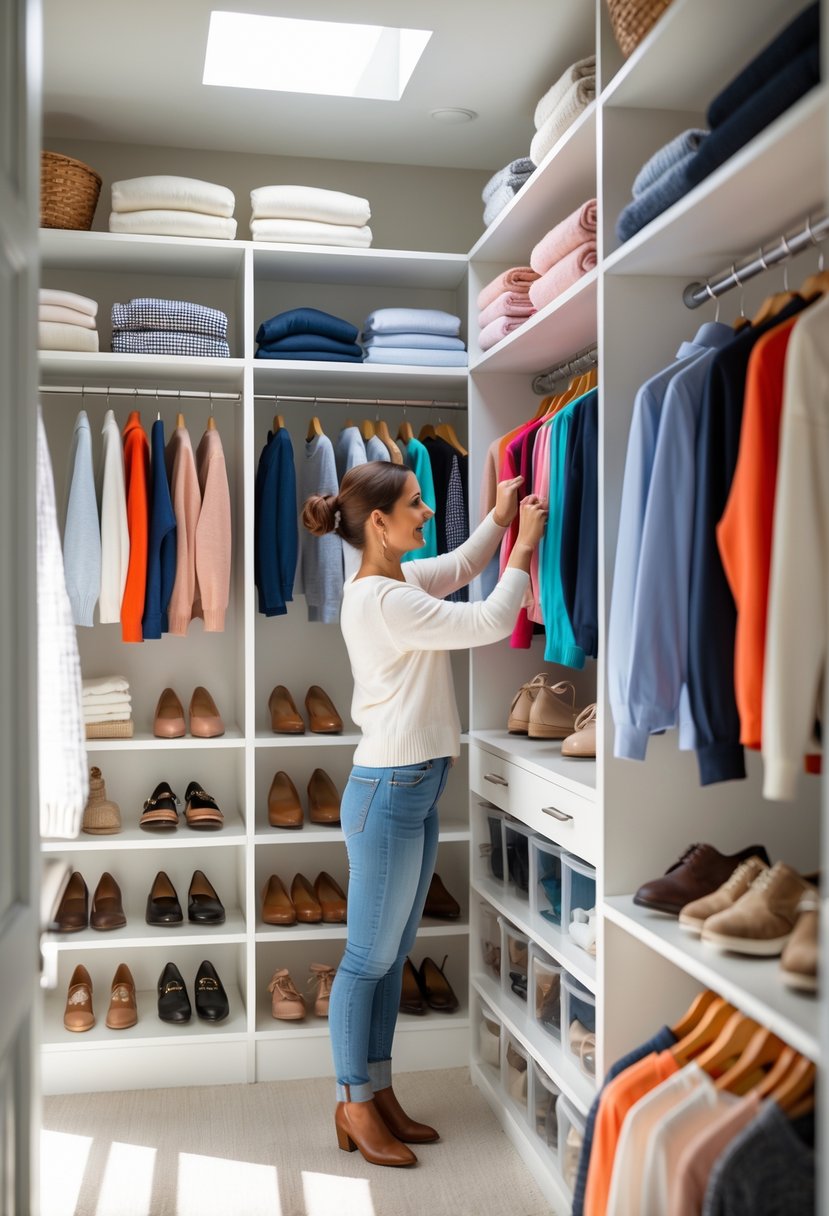
Keeping my closet organized means setting up habits that prevent clutter from coming back. Small daily actions and regular tidying help me maintain a neat space without spending too much time.
Establishing a Regular Cleaning Routine
I start by deciding a fixed day every week or month to clean my closet. On this day, I take out everything, check for items I no longer use, and put back only what I want to keep.
I also wipe down shelves and vacuum the floor if needed. This helps keep the space fresh and clean.
To make it easier, I use a checklist:
- Sort clothes by type.
- Remove items that are worn out or don’t fit.
- Fold or hang clothes properly.
- Clean surfaces.
- Organize accessories and shoes.
A set routine stops clutter from building up and makes the closet easier to use daily.
Implementing Quick Organization Tips
I use quick tricks every day to keep order. For example, I put things back in their right spot immediately after using them. This saves time later and keeps the closet tidy.
I also use storage bins and labels to group similar items like scarves or belts. This way, I don’t have to search for things.
Another tip I follow is hanging clothes by category and color. This makes finding what I need faster and creates a clean look.
Simple habits like folding sweaters neatly and stacking them properly prevent messes over time. These small steps add up to a well-kept closet without much effort.
